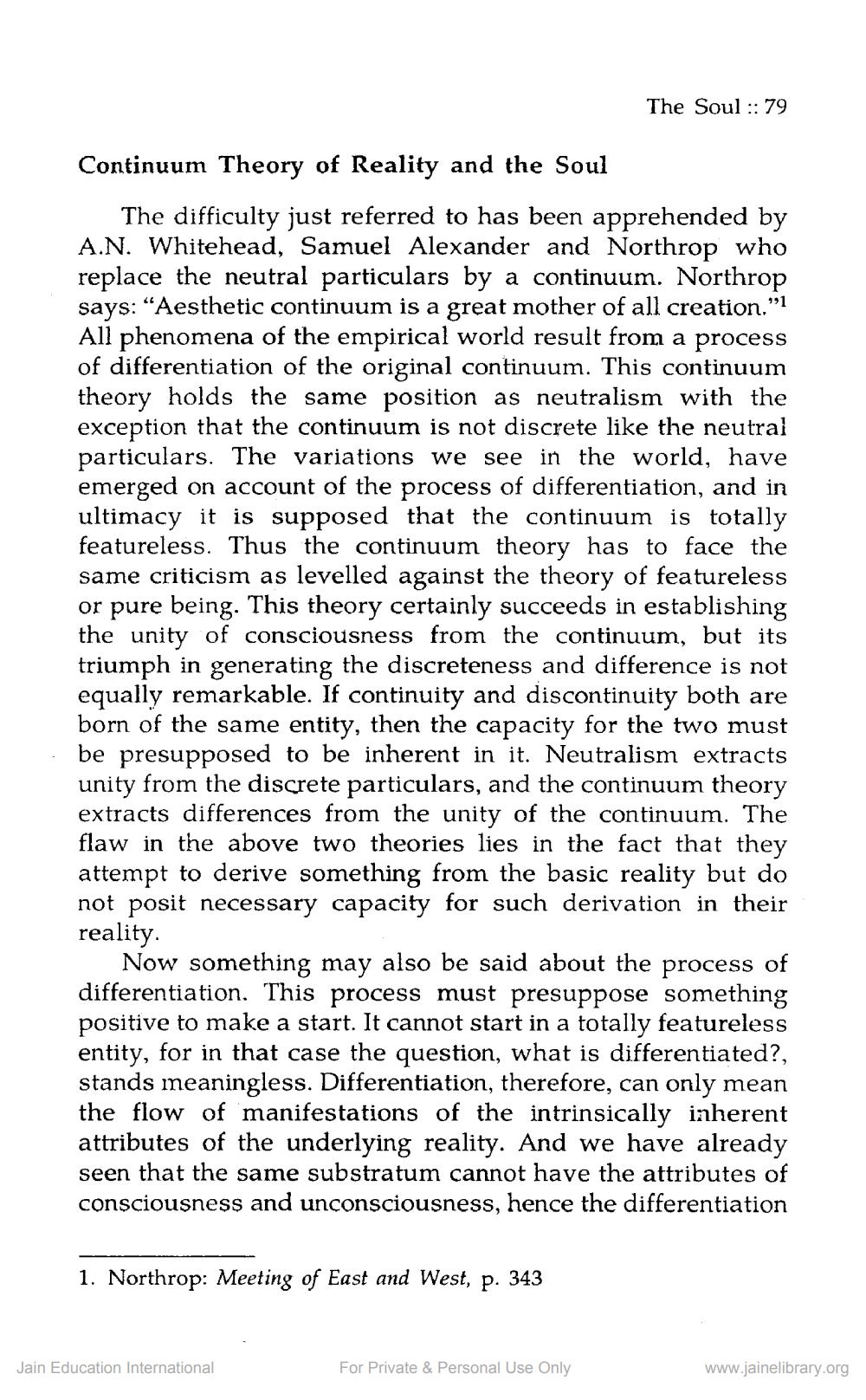________________
The Soul :: 79
Continuum Theory of Reality and the Soul
The difficulty just referred to has been apprehended by A.N. Whitehead, Samuel Alexander and Northrop who replace the neutral particulars by a continuum. Northrop says: “Aesthetic continuum is a great mother of all creation." All phenomena of the empirical world result from a process of differentiation of the original continuum. This continuum theory holds the same position as neutralism with the exception that the continuum is not discrete like the neutral particulars. The variations we see in the world, have emerged on account of the process of differentiation, and in ultimacy it is supposed that the continuum is totally featureless. Thus the continuum theory has to face the same criticism as levelled against the theory of featureless or pure being. This theory certainly succeeds in establishing the unity of consciousness from the continuum, but its triumph in generating the discreteness and difference is not equally remarkable. If continuity and discontinuity both are born of the same entity, then the capacity for the two must be presupposed to be inherent in it. Neutralism extracts unity from the discrete particulars, and the continuum theory extracts differences from the unity of the continuum. The flaw in the above two theories lies in the fact that they attempt to derive something from the basic reality but do not posit necessary capacity for such derivation in their reality.
Now something may also be said about the process of differentiation. This process must presuppose something positive to make a start. It cannot start in a totally featureless entity, for in that case the question, what is differentiated?, stands meaningless. Differentiation, therefore, can only mean the flow of manifestations of the intrinsically inherent attributes of the underlying reality. And we have already seen that the same substratum cannot have the attributes of consciousness and unconsciousness, hence the differentiation
1. Northrop: Meeting of East and West, p. 343
Jain Education International
For Private & Personal Use Only
www.jainelibrary.org




